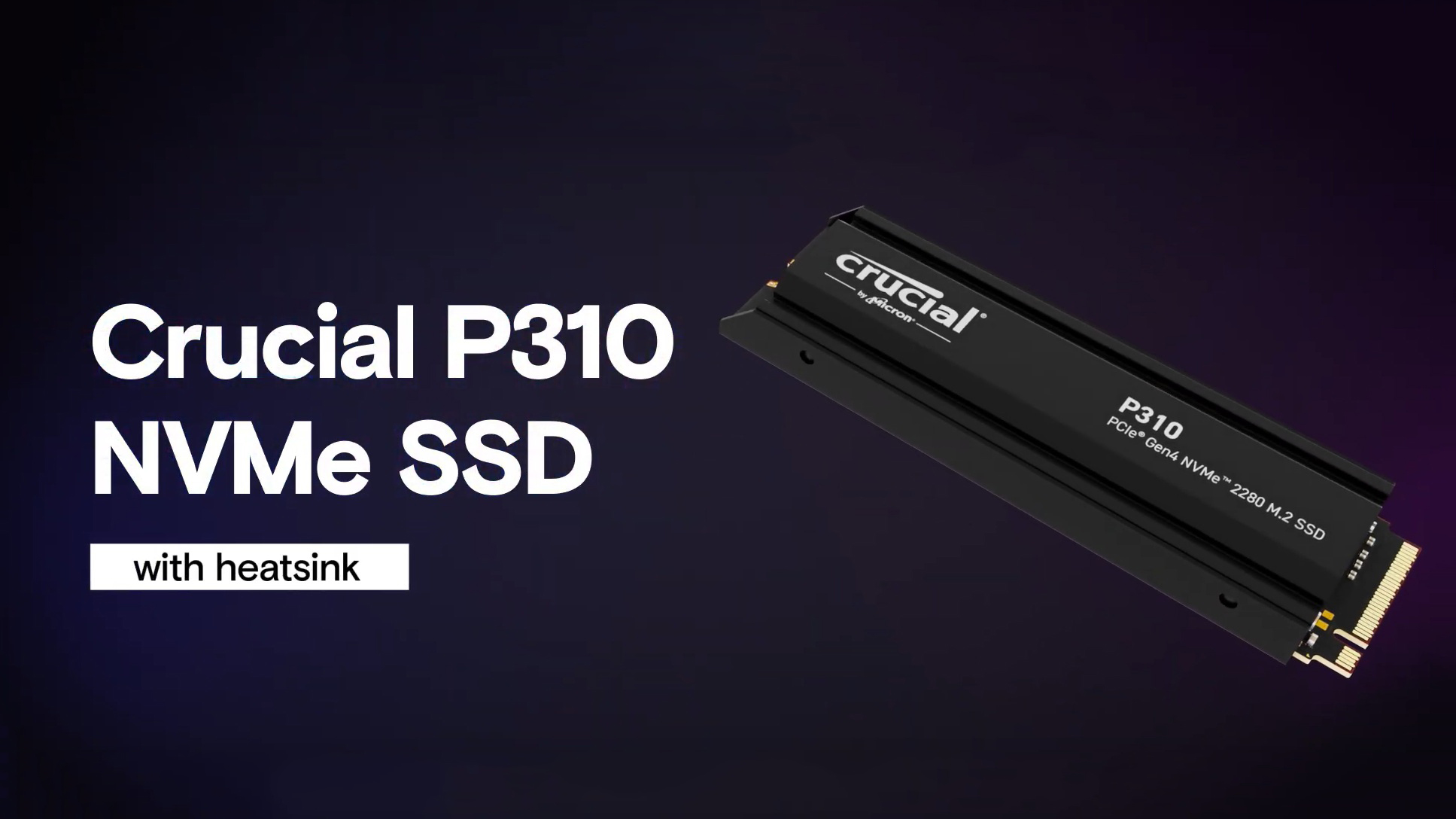Crucial P310 SSD with heatsink carries a $30 to $40 premium — $105 for 1TB and $160 for 2TB

Crucial has upgraded its popular P310 NVMe SSD lineup by introducing a version with an integrated heatsink. The new variant is available, particularly for the M.2 2280 model introduced last September. This addition should potentially keep temperatures in check during heavy workloads. Still, it also makes the SSD more suitable for installations in thermally constrained environments, such as compact PCs and the PlayStation 5.
You can purchase the heatsink-equipped Crucial P310 SSD at $105 for the 1TB model and $160 for the 2TB version. Crucial launched the heatsinkless drive at $65 for 500GB, $95 for 1TB, and $150 for 2TB. However, the current pricing has dropped to $42 for 500GB, $66 for 1TB, and $129 for 2TB. However, when writing this article, these prices dropped to $55 for 500GB, $70 for 1TB, and $130 for 2TB. Essentially, one would pay $30-$40 more for that added heatsink.
Equipped with a Phison E27T controller and a 232-layer Micron QLC NAND, the Crucial P310 offers sequential read speeds up to 7,100 MB/s and write speeds up to 6,000 MB/s over a PCIe 4.0 x4 interface.
In our testing of the non-heatsink variant, the P310 showcased impressive performance for a drive with QLC NAND and a DRAM-less design. In the 3DMark Storage Benchmark, which simulates gaming-related activities, the SSD outperformed some higher-tier drives, including the WD Black SN850X. Given its budget-friendly positioning, this is a notable achievement, indicating its ability to handle gaming workloads efficiently.
The PCMark 10 Storage Benchmark, which evaluates a drive’s performance across various everyday tasks such as document editing, video conferencing, and application launches, further highlighted the P310’s capabilities. The drive scored well, coming close to competitors equipped with DRAM and TLC flash. Despite its use of less durable QLC NAND, the P310 maintained a competitive edge in this benchmark, suggesting it is more than capable of meeting the needs of users with general productivity workloads.
However, sustained write performance is a weakness of the P310 2280 due to the inherent limitations of QLC NAND. Under heavy and extended workloads, the drive’s performance tends to drop more quickly than that of TLC-based SSDs, making it less ideal for users frequently engaging in large file transfers or professional video editing.
#Crucial #P310 #SSD #heatsink #carries #premium #1TB #2TB
